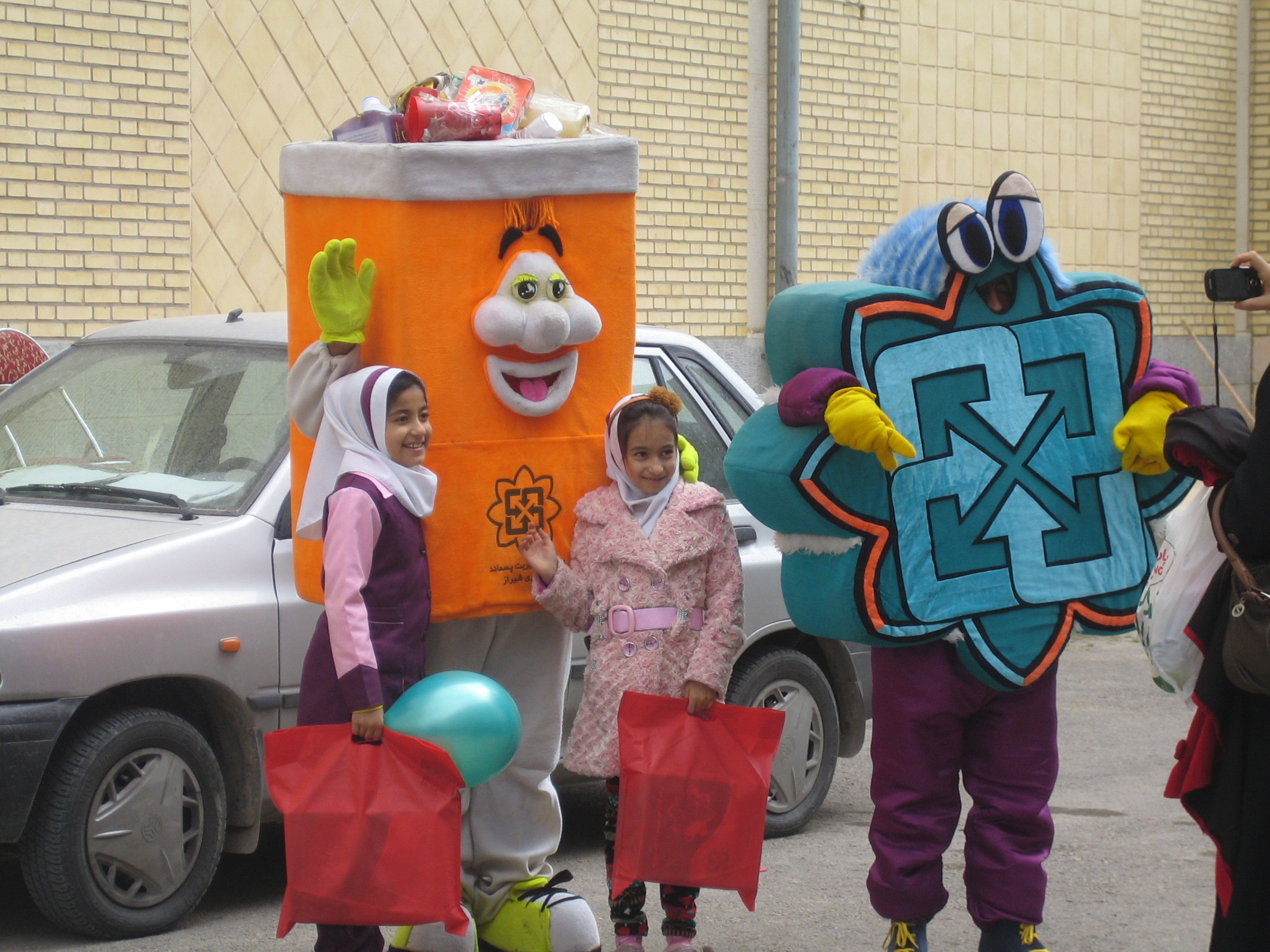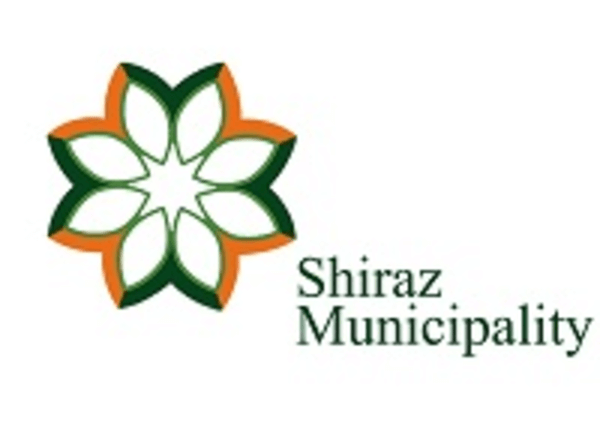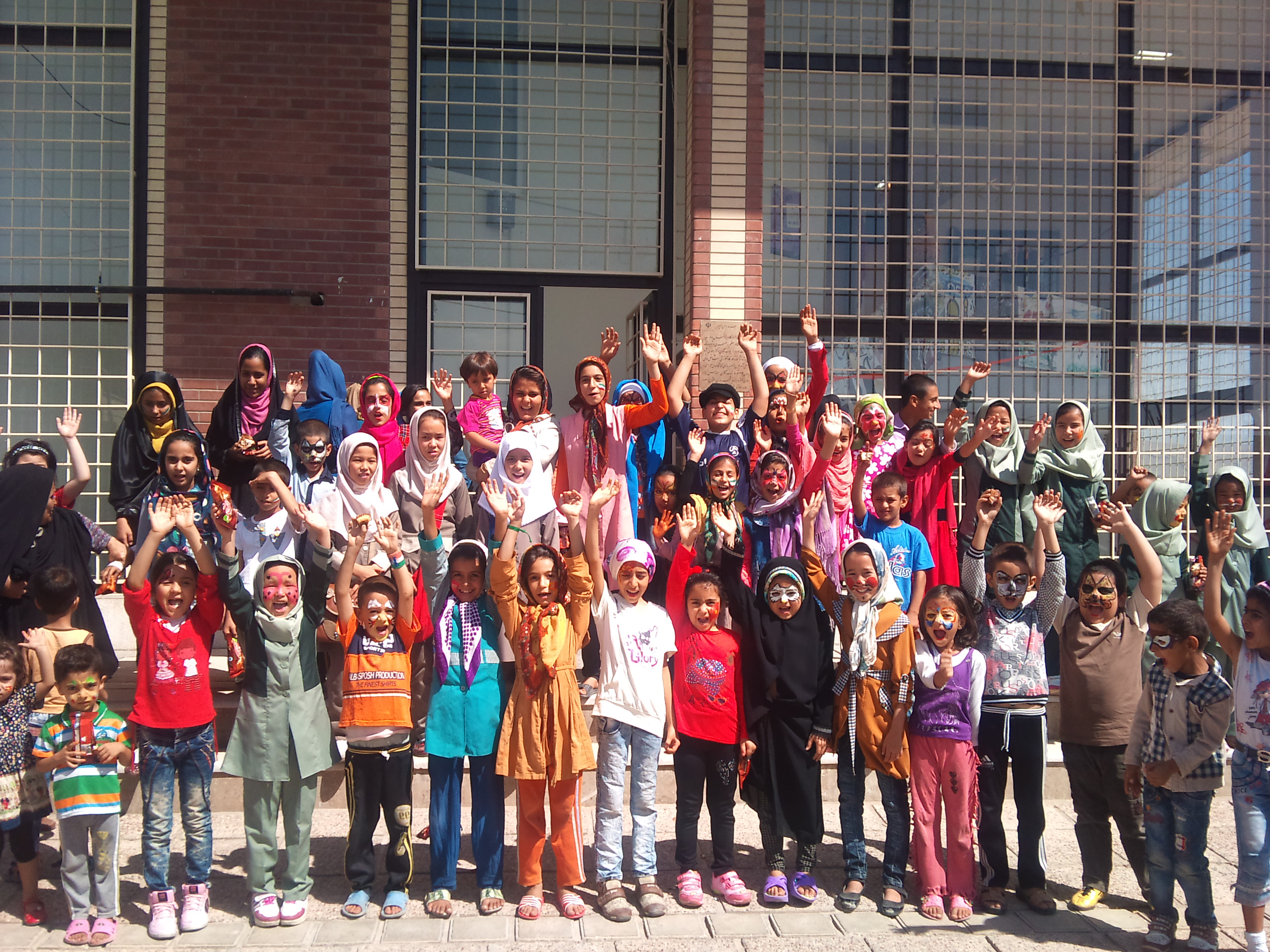 Children at the House of Neighborhood - © Shiraz Municipality
Children at the House of Neighborhood - © Shiraz Municipality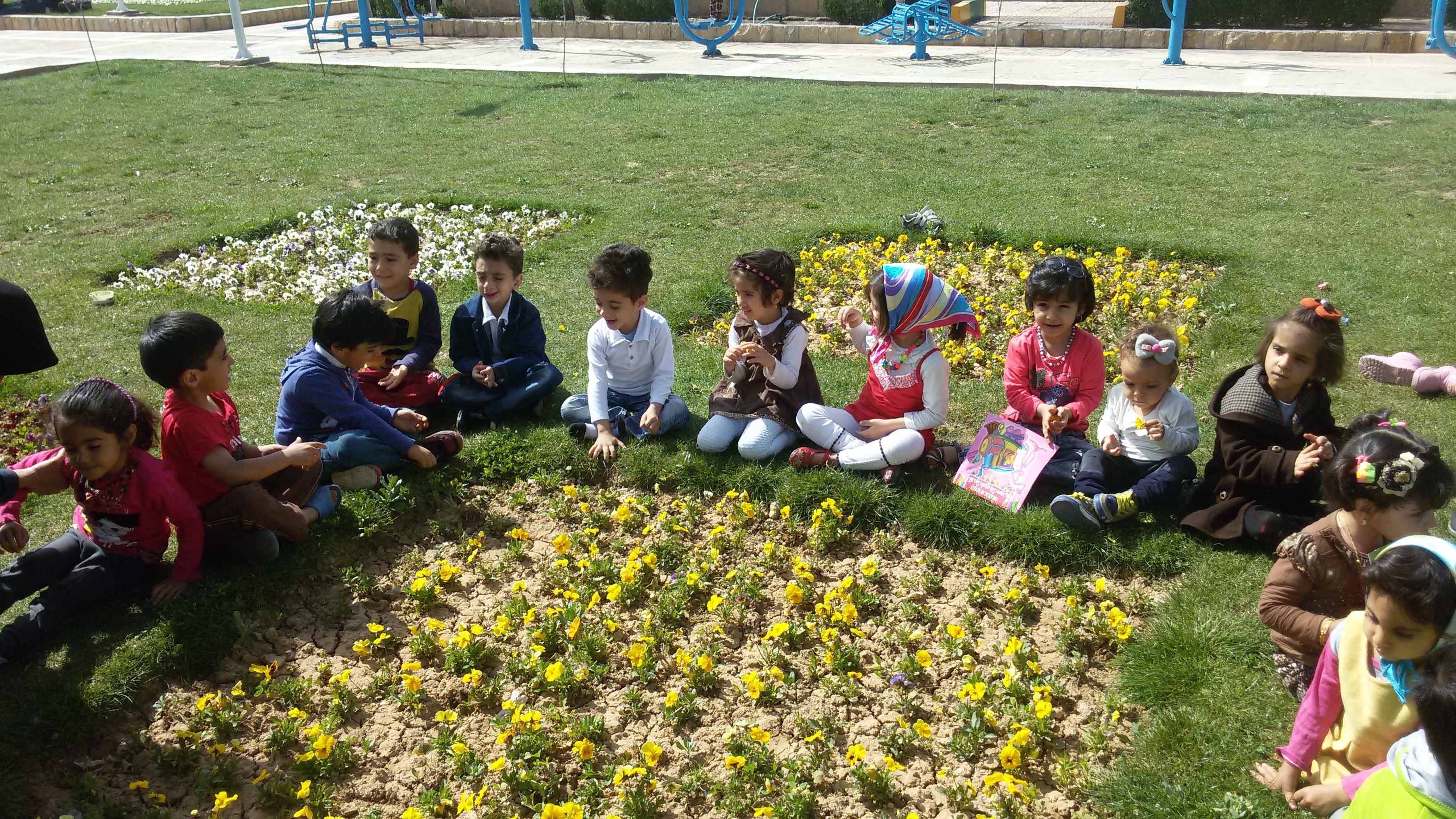 Teaching very young children - © Shiraz Municipality
Teaching very young children - © Shiraz Municipality- Teaching Waste management - © Shiraz Municipality
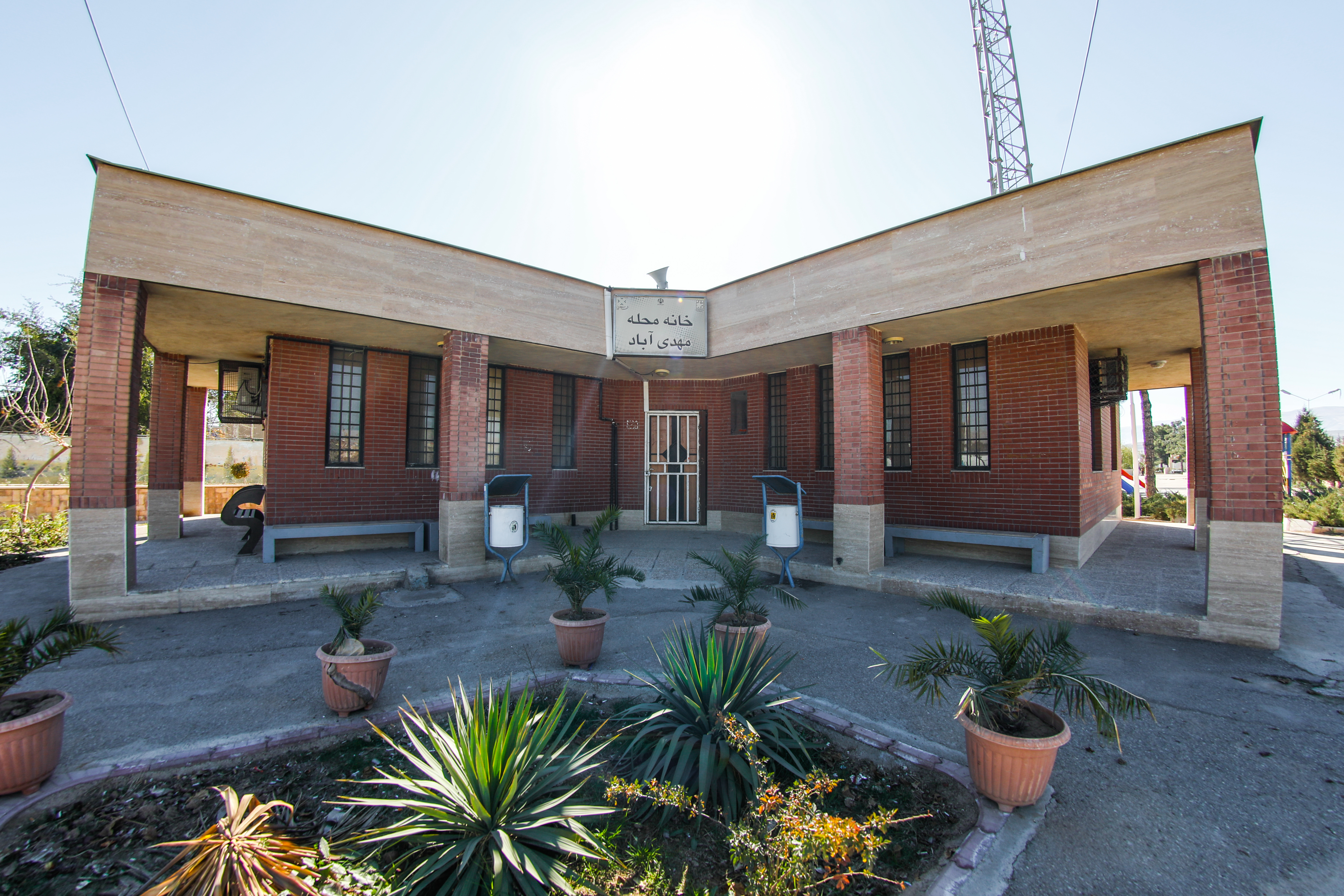 A House of Neighborhood (Saadi Neighborhood) - © Shiraz Municipality
A House of Neighborhood (Saadi Neighborhood) - © Shiraz Municipality
City
Shiraz
Main actors
City Government, NGO / Philanthropy, Community / Citizen Group, Public Utility, other
Project area
Neighborhood or district
Duration
Ongoing since 2003
The urban administration team of Shiraz are working collaboratively with residents to improve neighborhoods in informal settlements.
Shiraz is the fifth largest city in Iran with a population in excess of 1.5 million. Approximately 10% of the population reside in informal settlements. In 2010, the urban administration team established the “Neighborhood Houses,” a social initiative that focuses on educational, social and cultural issues that affect residents of informal settlements.
The Neighborhood House initiative has been developed and implemented by Pars Arayeh (engineer consultants) after being approved by the Provincial Urban Regeneration committee. The main objective is to put in place a plan to empower residents of the informal settlements.
The initiative includes:
- providing training in economic skills required for urban life
- encouraging resident’s participation and sharing responsibility among them and service providing groups
- Building relationships with the city management team including the staff of Historical Municipal District, etc.
- encouraging residents to demand accountability from related organizations
- changing or reducing the negative attitudes towards the informal settlement neighborhoods
- promoting a sense of citizenship among the residents to move towards the realization of citizenship rights
The national document on Empowerment and Organizing the Informal Settlements adopted was adopted by the national government in 2003. Following on from this, in 2007, the City of Shiraz launched a plan entitled “Empowering and Organizing Informal Settlements Project”. As a result, 40 neighborhood quarters were identified and 10 were designated as a high priority for a 10-year-period intervention. In 2010, the plan was put into operation by establishing Sahlabad Neighborhood House. The Neighborhood Houses of Saadi and Mahdiabad (KatesBes) were established in the first three years adopting a community-led approach. Relying on this experience and overcoming setbacks, Neighborhood Houses were later established in 7 other neighborhoods (Kosh-e-Meidan, Bahar Township, Sheikh-Ali Chopan, Dehpialeh, Gowd-e-Shiri, Gowd-e-Dabaghi, and Gowd-e-Gelkoob).
The proposals made based on “Empowering and Organization of Informal Settlements,” required the local community to acquire the capacity to continue the development process of the neighborhood. The Municipality and the local community were provided training courses by the Facilitating centers which were established within the 10-year period since launching the initiative.
Organisation structure
Each Neighborhood House has a fixed address and a board of trustees representing more than 36 urban service provision departments. The members attend a meeting every month to consider and solve the problems identified by the director of the House (who is appointed from among the local residents).
Firstly, after drafting the empowerment plan and placing a high priority on the local challenges at different levels, the person in-charge (the Director of the House), due to their comprehensive knowledge of and special relationship with different local groups, will set a new list of priorities. These priorities will be included on the agenda for the Board of Trustees when it is deemed appropriate. By adopting them, the urban service provision departments, in accordance with their scope of power, will undertake their responsibilities to solve the challenge(s).
The House of Neighborhood’s manager and the Board of Trustees are entrusted to approve and propose solutions to the priorities that have been identified. The challenges at local and micro-level will be covered by the Board of Trustees; while Macro-ones will be referred to the Sustainable Urban Regeneration Committee of the County which is chaired by Shiraz Municipality. This committee will follow the agenda set in accordance with the challenges identified in the informal settlements that could not be solved by the Board of Trustees.
Training activities
Teaching and learning principles have always been among the most important factors in any plan for community-led regeneration of informal settlements. As the nature of social issues in these neighborhoods is vague and indefinite, reproducing and regularly providing training modules on all related aspects at managerial, expert and at community level is very important. Thus, the Neighborhood Houses initiative is mainly focused on providing training for local residents to become familiar with their citizenship rights. Training and learning also provides residents (who are mostly from rural areas and unskilled) with job skills to secure paid employment
The organizations playing a role in the Neighborhood Houses initiative are members of the Board of Trustees and should allocate 30% of the required budget to the target neighborhood as per the regulations of the Rules of Action. The organizations are classified into three groups:
1. Governmental Bodies: Provincial Govt., Governorship, Medical Sciences, Welfare Org., Disciplinary Forces, Endowment & Charity, Water & Wastewater, Gas Dept., Power & Electricity, and Education
2. Public & Semi-public Bodies: Municipality, Civil Development & Construction Company, Culture & Urban Development Charitable Society, and Islamic City council
3. Local Bodies & NGOs: Council Assistants, Local Trustees, Mosques, Local Elites, Congregations, Local Athletes, Local Donors, and Local Famous People.
The results and impacts have been the following:
Efficiency
- 25% of the House of Neighborhood's graduates have been able to use their learned skills for the purpose of part-time or full-time jobs (self-employment), establish a cooperative company and/or running a production unit. 75% of graduates have the skills to effectively practice economic activities at home.
- Residents' participation in establishing local structures demonstrates the need to identify opportunities while considering them in the process of local development.
- The local residents can access the Neighborhood House by a 10-minute walk from their homes, which is deemed a reasonable distance. The House of Neighborhood should be located at the center of the neighborhood.
- Half of those citizens who have visited the House of Neighborhood expressed their satisfaction at the services, which they were offered
Effectiveness
- Half of the residents expressed their willingness to renovate their houses if they would be offered services such as being given loans and being issued with the title deed at a cost-effective rate.
- According to 34% of citizens who visited the House of Neighborhood, the safety issues have relatively improved within the 500 meters of their house locations.
- 96% of local residents are ready to participate in local development
Having over decade of experience now, the community-led empowerment activities have been transformed into building renovation and retrofitting initiatives in the same neighborhoods. The Shiraz Municipality offers incentives to citizens who are renovating in accordance with the current urban development guidelines in order to narrow the gap between the quality of life in these neighborhoods and the middle and uptown neighborhoods.
The challenges are as follow:
- Making managerial changes and improving managerial attitudes towards such neighborhoods
- Lack of specialized workforce in the community-led urban regeneration domain.
- Lack of financial resources needed for implementing this project
- The rapid change in the demographic of the neighborhoods and the ethnic diversity of local residents
- Lack of a legal procedure to ensure the managerial coordination among service providing bodies being located in the neighborhoods.
- Administrative bureaucracy
- The existence of some legal impediments in establishing NGOs in the neighborhoods
- Faster rate of immigration in some of the neighborhoods than that of providing services to the current residents.
One of the positive experiences of launching the Neighborhood Houses social initiative at the macro-level, while a bottom-up approach and directive planning are dominant in the city administration, is that comprehensive and coordinated planning can be considered in a transition period to a more unified urban management approach.
The major experiences at local and urban management levels are:
- Capacity-building
- Providing training, including raising awareness of the project with activists and stakeholders such as residents, managers and staff of related organizations, high-ranking officials, policy makers and decision-makers at the local level.
- Preparing and distributing training packages such as books, journals, video programs, etc.
- Institutionalization: A process through which the urban regeneration plan and activities are carried out cooperatively and in an integrated fashion. This includes:
- Reviewing the management and planning process and structures
- Running a comprehensive evaluation and survey of plans and activities
- Improving the knowledge management
- Creating a database
- Documentation of the process
- Process establishment: refers to promoting the citizenship’s demand for accountability. It is achieved through:
- promoting and publicizing information among different related activists
- managing and supporting the cultural, conference and meeting programs
- making applicable and related documentation and resources
- organizing training programs
- Networking refers to all programs implemented for the purpose of sharing knowledge and avoiding parallel working processes. It is achieved through establishing groups and networks, developing procedures for the horizontal and vertical cooperation of organizational and legal entities, and establishing various means for seeking activists’ participation. This process requires the commitment of municipal and governmental organizations, the participation of activists from the non-governmental and private sector, community organizations and the public.
- Instrumentalism: developing the financial and legal tools required facilitate the process of urban regeneration undertaken and to empower the citizens of the target neighborhood. This is done through identifying challenges and proposing some specific solutions such as developing and reviewing by-laws, regulations, and instructions as well as offering incentives.
- Facilitate Training and Education: Educational activities are conducted to improve efficiency and reduce conflicts by helping each other reach mutual understandings as well as easing work procedures. The facilitators roles is to simplify procedures, processes and tasks.
Training is a continual process of transferring knowledge and experiences to the residing community and the urban management team (municipality, etc.). Having a specialized workforce and a legal framework are important factors to reach the goals of community-led urban regeneration in Shiraz.
- Pars Arayeh Consultative engineer (2007). Shiraz’s capacity-building of and organizing informal settlement plan.
- National document on capacity-building and organizing informal settlement enacted by the Iranian Cabinet Decree in 2003.
- Article 16 of Revitalization, reform and renovation of urban degenerated and inefficient fabrics Act enacted by the Iranian Cabinet Decree in 2010.
- National Strategic Document on revitalization, reform and empowering the urban degenerated and inefficient fabrics enacted by the Iranian Cabinet Decree in 2014.
On Map
The Map will be displayed after accepting cookie policy
